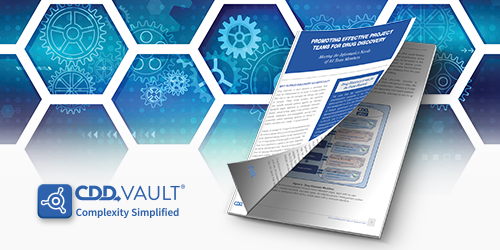
Drug discovery is difficult because a candidate drug must be characterized by its action in model systems that may or may not translate into efficacy and safety in humans. These model systems are extensive and typically evaluate potency against the intended biological target, selectivity vs. unintended biological targets, cellular activity, safety in test animals, chemical stability, metabolism, and bioavailability (among other properties), prior to requesting approval for testing in healthy volunteers and—finally—in actual patients.
A drug-discovery research project can be made more efficient, with reduced costs and increased likelihood for success, through optimal handling of the diverse information the project generates. The discovery team is inherently data driven, and the volume of data generated is often overwhelming, discipline specific, and difficult to interpret.
Modern informatics systems, such as CDD Vault, can help make that data conveniently available, and user friendly visualization renders it readily interpretable by all members of the project team. This becomes critical when the team spans several laboratories and/or geographic sites.
Download this white paper from Collaborative Drug Discovery to learn about how CDD Vault can help meet the informatics needs of all research team members!
All product names, logos, and brands are the property of their respective owners. All company, product, and service names used on this website are for identification purposes only.

